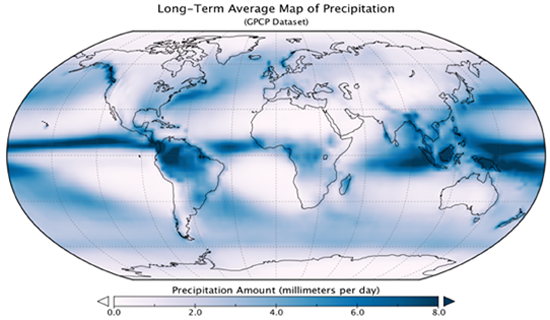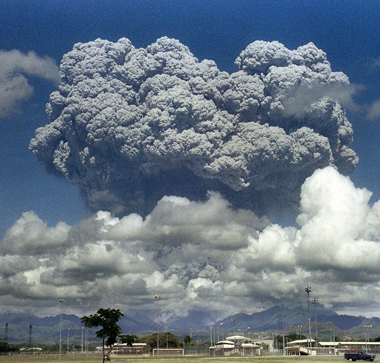The Climatic Toll of Volcanic Eruptions
 |
|
A new study led by UAlbany researchers tracks the heavy influence of massive volcanic eruptions on the intertropical convergence zone that is home to some of the most intense rainfall on the planet.
|
ALBANY, N.Y. (October 18, 2016) -- Volcanic eruptions over the last 1,000 years have exacted a heavy influence on global climate, according to a new study led by researchers at the University at Albany. The impact is felt most dramatically near the equator, where eruptions have led to reduced rainfall in both the summer monsoon and winter seasons, as well as a cooling trends across entire continents.
Writing in Earth System Dynamics, UAlbany researchers Christopher Colose and Mathias Vuille, along with Allegra LeGrande of the NASA Goddard Institute for Space Studies, document the influence of large, explosive (Plinian) volcanic eruptions during the last millennium. They found that the narrow precipitation belt in the deep tropics – the intertropical convergence zone (ITCZ) would shift following massive eruptions.
The ITCZ is a critical resource, producing some of the most intense rainfall on the planet, providing water for ecosystems and agriculture, and affecting hundreds of millions of people. The monsoons, linked to the ITCZ, equally provide vital rainwater used for sanitation, drinking water, hydropower production and irrigation in tropical countries all over the world, from India to Bolivia.
 |
|
The 1991 Plinian/Ultra-Plinian eruption of Mount Pinatubo in the Philippines was the second largest eruption of the 20th century.
|
"We looked at how volcanic eruptions in one hemisphere impact the tropical rain belt and found that it tends to move toward the opposite hemisphere," said Colose, a graduate researcher who is completing his Ph.D. in atmospheric and environmental sciences at UAlbany.
It has long been known that volcanic eruptions cool the planet and reduce rainfall averaged across the entire globe. "However, following Plinian eruptions, the rain belt moves away from the hemisphere where the volcano is located. So if you're sitting somewhere south of the equator in South America, and an eruption goes off in Iceland, the tropical rain belt may move southward a bit, and actually give you a bit more rain,” said Colose. “This is a fascinating example of how an event can trigger changes in the atmosphere that modify the climate thousands of miles away."
The findings may help scientists better understand the dynamics at work during monsoon seasons across the planet, and to create a prediction model for the climatic impact following a massive volcanic eruption.
"Plinian volcanic eruptions are a dominant driver of naturally forced climate change during the last millennium," said Colose. "For instance, the effect of the Mount Pinatubo eruption in 1991was felt worldwide, with the average temperature dropping for the next three years."
On a global scale, the climate during the 1,000 years prior to the industrial revolution was quite stable, but volcanic eruptions had the largest external influence on the changes that did occur. Other smaller factors include subtle fluctuations in the Sun’s output, wobbles in the Earth’s orbit, and land-use change caused by humans across Europe and North America.
Plinian eruptions thrust massive volumes of aerosols into the atmosphere, blocking the sunlight Earth absorbs and resulting in a widespread cooling effect. Although the Earth is currently warming due to large-scale greenhouse gas emissions, a large volcanic eruption like Mt. Pinatubo would suppress the temperature rise for a couple of years. However, it is only a temporary effect.
![]() For more news, subscribe to UAlbany's RSS headline feeds
For more news, subscribe to UAlbany's RSS headline feeds
A comprehensive public research university, the University at Albany-SUNY offers more than 120 undergraduate majors and minors and 125 master's, doctoral and graduate certificate programs. UAlbany is a leader among all New York State colleges and universities in such diverse fields as atmospheric and environmental sciences, business, education, public health,health sciences, criminal justice, emergency preparedness, engineering and applied sciences, informatics, public administration, social welfare and sociology, taught by an extensive roster of faculty experts. It also offers expanded academic and research opportunities for students through an affiliation with Albany Law School. With a curriculum enhanced by 600 study-abroad opportunities, UAlbany launches great careers.


